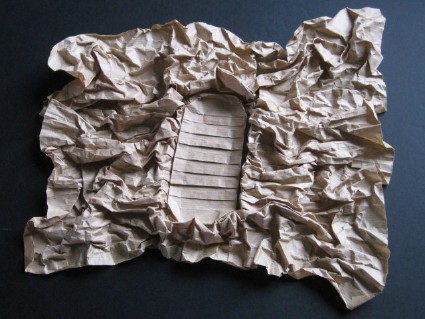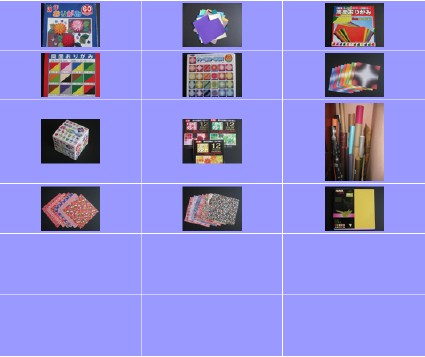
 | Welcome on MOOC-invitation |
|
| New! | An invitation to practice origami | map | Discovery of the world of folding paper The tools of the folder |
| Back MOOC1 | Journey 2 | Sequence 2 | <--- page 7 | page 1 | page 2---> |
 |
Paper |
| To begin, let's eliminate a common misconception: no, it is not mandatory to have special paper origami (naturally Japanese ...) to be able to do the folding! All paper can be folded, and there are some of them. The most difficult is not to find paper, but to choose the one that will be best suited to folding to achieve. Some elements of choice: - the weight of the paper (mass per square meter), which can be assimilated to its thickness. Ordinary printing papers have a basis weight of 80 g / m2. « Heavier » papers (from 90 g / m2 to 160 g / m2) are used, but also « lighter » papers (from 20 g / m2 to 60 g / m2) are used. The grammage determines a certain hold of the paper. The thicker and denser it is, the harder it is to fold! - the colour. This is certainly one of the elements of the complexity of choice. You will find solid plain paper (same color on both sides) or two-color (both sides of the paper have a different color). Note that one of the two colors is often white. You will also find papers with patterns whose variety may be puzzling. - grain, or texture: smooth, granulated, fluffy ... - the format: square, rectangular (for example in A4 or A3 format), in rolls such as kraft paper (often 70x100 cm), gift papers or tablecloths. But you can also use round paper doilies or tea bags ... - the size: you will find pre-cut paper of any size: 5x5 cm, 7,5x7,5 cm, 15x15 cm, 30x30 cm, 65x85 cm ... But you can cut them to size that suits you best! Some examples of papers commonly used by origamists and that you can find in specialty stores: so, kraft, washi, kami, biotope, origamido, lokta, shindanshi, but also toilet paper, butcher's, silk, mulberry, metallized , textured, glassine, elephant skin ... and so on and of the best. If you do not find your happiness in this list, nothing prevents you from making your own paper. You can laminate two sheets of the colors of your choice (for example using methylcellulose glue like wallpaper glue), or even make sandwich paper using aluminum foil as a support for two sheets of tissue paper. You can even start a collection of papers to fold. Look closely at any piece of paper that falls into your hands: wrapping paper, gift wrap, writing paper, kraft paper, florist paper, single-color, patterned, small or large, and so on. This is not missing! Then try folding something with the paper you have selected. Depending on the result, you will keep or discard the sheet being tested. You will quickly have a large supply of basic material! In summary, bend, take pain, it is the paper that misses the least! For the technique of creating pasted paper using MMC, you can look at - video 1 How to make MC easily by Eric Vigier - video 2 How to make double tissue by Sarah Adams (Happyfolding) |
12 photo(s)